Text and images by Jenna Stanek
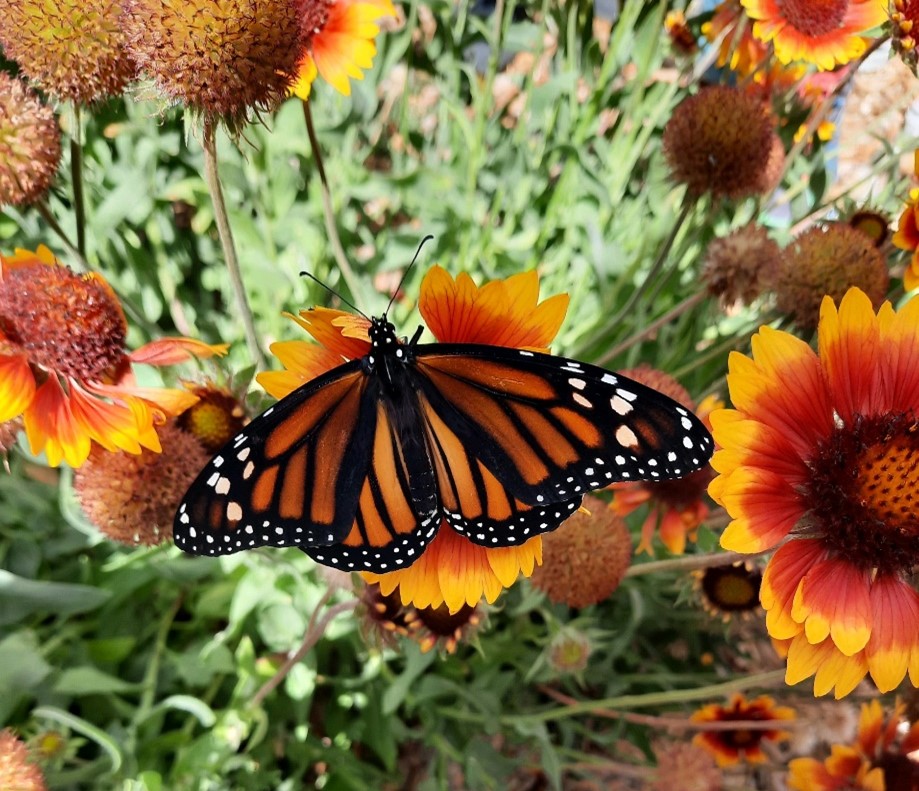
Monarch butterflies are one of the most iconic and recognizable butterfly species in North America. They are known for their annual multigeneration migration from overwintering sites in central Mexico and coastal California to as far north as Canada. The monarch is the only butterfly known to make a two-way migration as birds do. Monarch butterflies migrate from their wintering grounds along the coast of California and Mexico to their breeding grounds in the northern and central part of the U.S. and back again over four generations! None of the monarchs on the fall migration path have ever been to their destination before, and yet they know exactly where to go. Scientists believe they use the sun’s position and Earth’s magnetic field to navigate directionally, but the rest is still a mystery being investigated.
Monarch butterflies lay their eggs on milkweed (Asclepias spp.) plants and this is the only type of plant their caterpillars can consume. They also are pollinators, collecting pollen on their bodies and spreading it as they travel from flower to flower consuming nectar.
There are 7 species of milkweed documented in Los Alamos County. The most common species are: Horsetail milkweed, Showy milkweed, Antelope horn milkweed, and Butterflyweed. More uncommonly found are Longhood milkweed, Engelmann’s milkweed, and Green comet milkweed.
Common Species of Milkweed in Los Alamos County
Horsetail Milkweed
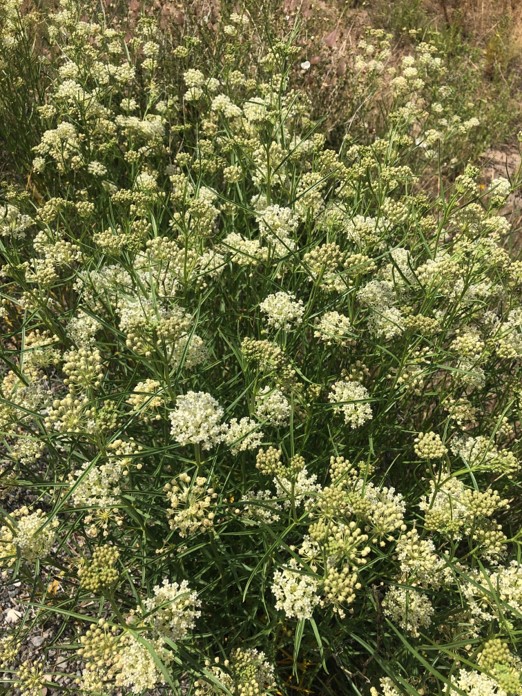
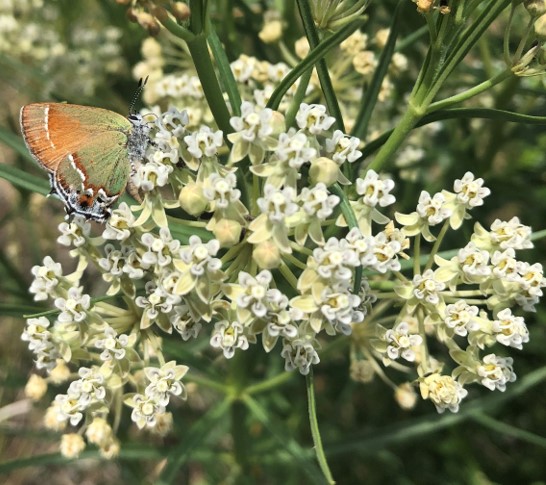
Antelopehorn Milkweed
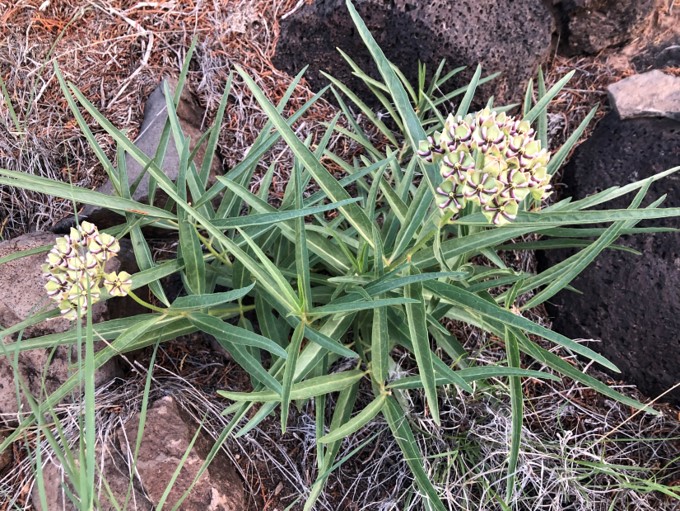
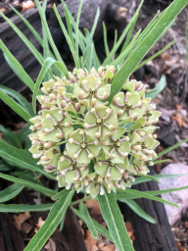
Butterflyweed
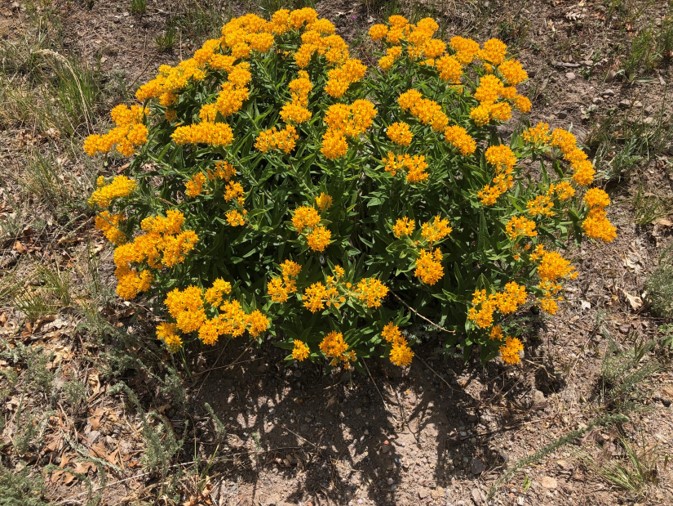
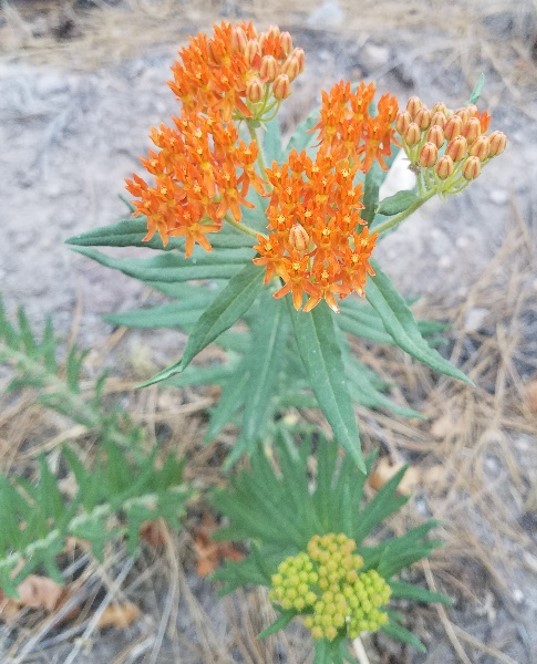
Showy Milkweed
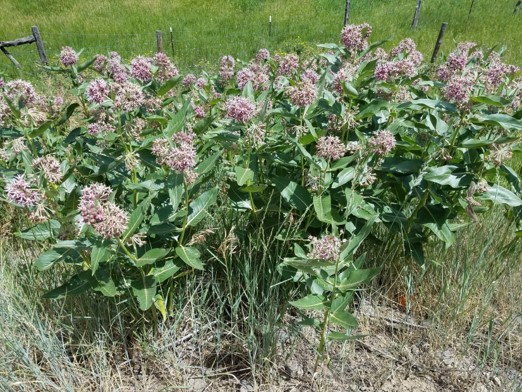
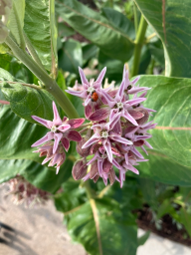
Monarch butterflies (Danaus plexippus) have declined by an estimated 80% over the past 20 years. Monarch numbers are estimated at overwintering sites and have been documented since 1995. This graph shows the estimates over time from both eastern and western populations combined. Monarch butterfly populations have declined by over 85% in the last two decades.
In 2024 there were estimated to be 38 million monarchs. You may think that 38 million monarchs sounds like a lot, but in reality Monarchs need a very large population size to be resilient to threats from severe weather events, disease, and predation. For example, a single winter storm in January 2002 killed an estimated 500 million monarchs, roughly 13 times the size of the current population.
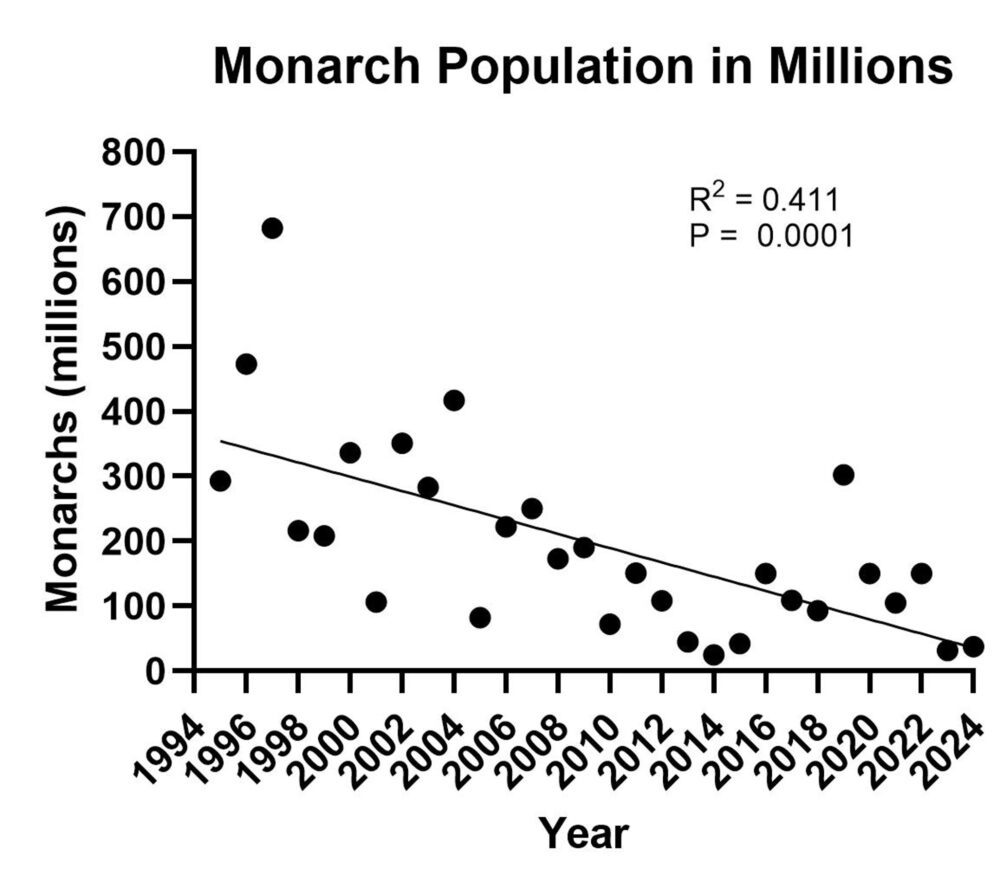
In 2014, the U.S. Fish and Wildlife Service (USFWS) was petitioned to protect the monarch butterfly under the Endangered Species Act. In 2020 the USFWS decided that Monarchs should be listed under the Endangered Species Act but were not yet listed because there are other animals that need the protection more so at that point it was a candidate species. In December of last year, the U.S. Fish and Wildlife Service announced a proposed rule on Dec. 10, 2024, to list the monarch butterfly as threatened under the Endangered Species Act (ESA). The USFWS has one year to review the public input and scientific data before making a final decision in December 2025 whether to list the monarch under the ESA.
If the monarch is listed under the ESA it will receive federal protections. A threatened proposed ruling with an accompanying 4(d) rule allows the USFWS to modify or exempt some prohibitions based on conservation and management needs identified specifically for the monarch. In the 4(d) rule, the USFWS identifies the need to increase the availability of milkweed and nectar plants, to protect and enhance overwintering habitat, to reduce the negative impacts of pesticides, and to maintain public support for monarch conservation. The USFWS also emphasizes the importance of people in shaping current conservation efforts and indicated its intent is to incentivize voluntary efforts.
The great news is that you can help—plant some of our local native milkweed and pollinator plants in your yard! Please contact Los Alamos Bee City if you have locally native milkweed seeds to share or if you are interested in obtaining locally native milkweed seeds. Together we can all make a difference!
